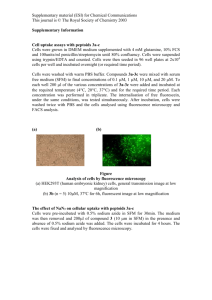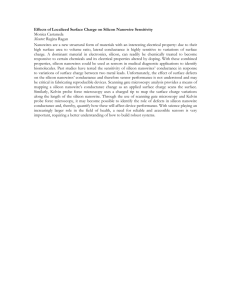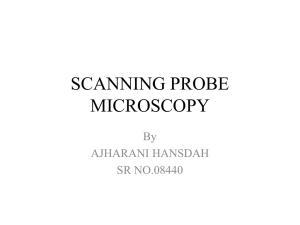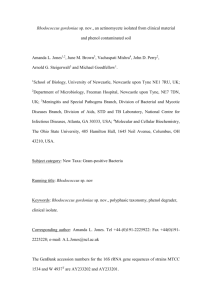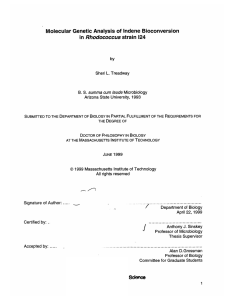molecular incubation
advertisement
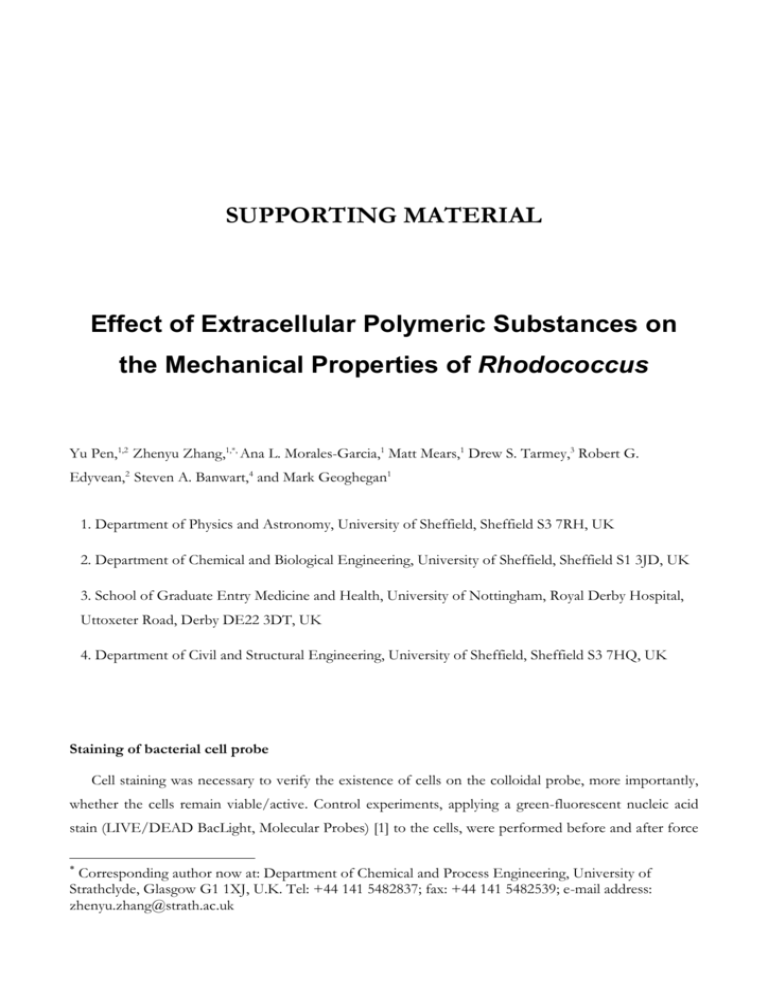
SUPPORTING MATERIAL Effect of Extracellular Polymeric Substances on the Mechanical Properties of Rhodococcus Yu Pen,1,2 Zhenyu Zhang,1,*, Ana L. Morales-Garcia,1 Matt Mears,1 Drew S. Tarmey,3 Robert G. Edyvean,2 Steven A. Banwart,4 and Mark Geoghegan1 1. Department of Physics and Astronomy, University of Sheffield, Sheffield S3 7RH, UK 2. Department of Chemical and Biological Engineering, University of Sheffield, Sheffield S1 3JD, UK 3. School of Graduate Entry Medicine and Health, University of Nottingham, Royal Derby Hospital, Uttoxeter Road, Derby DE22 3DT, UK 4. Department of Civil and Structural Engineering, University of Sheffield, Sheffield S3 7HQ, UK Staining of bacterial cell probe Cell staining was necessary to verify the existence of cells on the colloidal probe, more importantly, whether the cells remain viable/active. Control experiments, applying a green-fluorescent nucleic acid stain (LIVE/DEAD BacLight, Molecular Probes) [1] to the cells, were performed before and after force Corresponding author now at: Department of Chemical and Process Engineering, University of Strathclyde, Glasgow G1 1XJ, U.K. Tel: +44 141 5482837; fax: +44 141 5482539; e-mail address: zhenyu.zhang@strath.ac.uk * measurements. For fluorescence microscopy, an Olympus BX51 microscope equipped with a WIBA filter cube (excitation filter, 460~490 nm band pass; barrier filter, 510~550 nm band pass) was employed. A typical cell probe treated with SYTO 9 is presented below, which shows a great number of cells were attached to the probe. Therefore, the force curves recorded in the experiments were confirmed as cellsilicon interactions instead of silicon-silicon or poly-D-lysine-silicon interactions. Figure S1. A cell probe that had been treated with SYTO 9 cell staining under fluorescence microscopy. An enhanced green colouration on the colloidal probe confirms that the particle is fully covered by rhodococcal cells. Fluorescence imaging of rhodococcal cells Rhodococcus sp. RC291 cells were incubated in a LB medium at 24 h. After this time, the cell culture was divided into four aliquots, then treated with following washing protocols: (1) kept in the LB medium as control; (2) centrifuged at 1,200 g for 10 minutes (slow centrifugation) and re-suspended in PBS buffer; (3) pelleted at low speed (as above) and washed at high speed (12,100 g for 2 min) for 6 times in PBS; (4) pelleted at low speed, and washed at high speed (both as above) three times in PBS and three times in DI water. To stain the cells, 1 mL of each above prepared samples was mixed with 200 μL of Film Tracer SYPRO Ruby Red Biofilm Matrix Stain solution (Molecular Probes), incubated for 15 min., followed by the addition of 1.5 μL SYTO 9 stain (Molecular Probes, UK) with another 15 min of incubation. In this set of measurements, we used Olympus BX50 microscope equipped with a super wide band (SWB) filter cube that allows the transmission of both green and red fluorescence signals simultaneously, and a WG filter cube that only red signal is transmitted. Figure S2. Fluorescence microscopy images of Rhodococcus RC291 cells in mid-stationary phase (24 h) stained with SYPRO Ruby Red and SYTO9. Magnification was 10× for images a, b, c, and d; and was 40× for images e, f, g, and h. Scanning force microscopy imaging of rhodococcal cells The concentrated cell solution (~109 cell/mL) of Rhodococcus sp. RC291 was diluted to~107 cells/mL using DI water. 5 µL of the dilution was then placed on a cleaned silicon wafer, and left for 3 h to allow the water to evaporate. An atomic force microscope (Dimension 3100, Digital Instruments) was used in intermittent contact (tapping) mode to image the (dehydrated) cell surface with a scan rate 0.5 Hz. SFM imaging provides a better resolution of the cells than optical microscopy does. By considering cell-silicon interactions as sphere-planar surface interactions, the averaged size of cells was used as the sphere radius to estimate thickness, grafting density, and charge density of EPS. Fig. S3 presents a typical height image of cells of Rhodococcus sp. RC291 on a silicon wafer acquired by SFM. A statistical analysis of Fig. S3 (SFM image of over 20 cells) reveals that the cell (length) size was 1.9 ± 0.3 µm. Fimbriae, proteinaceous appendages associated with cell adhesion, [2]are not observed in the image. It has been demonstrated in the previous work [3] that due to the curvature of the silicon sphere (10 µm) used in preparing a colloidal probe, and the size of rhodococcal cells, only one cell is in contact with the silicon surface during force measurements. This ensures the interactions measured are between a single cell covered with EPS and the silicon surface. Figure S3. Height image of cells of Rhodococcus sp. RC291 on a silicon wafer acquired by scanning force microscopy under intermittent contact mode. Cells were of an average (length) size 1.9 ± 0.3 µm. The scale bar denotes 2 µm. Force measurements using a poly-D-lysine-coated probe Control force curves were collected between a poly-D-lysine coated probe and a silicon substrate in 1 mM NaCl solutions at pH 3.0, 6.5 and 10.0. Fig. S4 shows attractive interactions between the poly-Dlysine functionalized probe and the silicon substrate at a very short distance. Figure S4. Approach curves show attractive interactions between a poly-D-lysine covered probe and a silicon surface in 1 mM NaCl solution at pH 3.0, 6.5 and 10.0. References [1] L. Boulos, M. Prévost, B. Barbeau, J. Coallier, R. Desjardins, LIVE/DEAD BacLight: application of a new rapid staining method for direct enumeration of viable and total bacteria in drinking water, J. Microbiol. Methods, 37 (1999) 77-86. [2] T.R. Neu, K. Poralla, An amphiphilic polysaccharide from an adhesive Rhodococcus strain, FEMS Microbiol. Lett., 49 (1988) 389-392. [3] S.K. Lower, M.F. Hochella Jr., T.J. Beveridge, Bacterial recognition of mineral surfaces: nanoscale interactions between Shewanella and α-FeOOH, Science, 292 (2001) 1360-1363.


